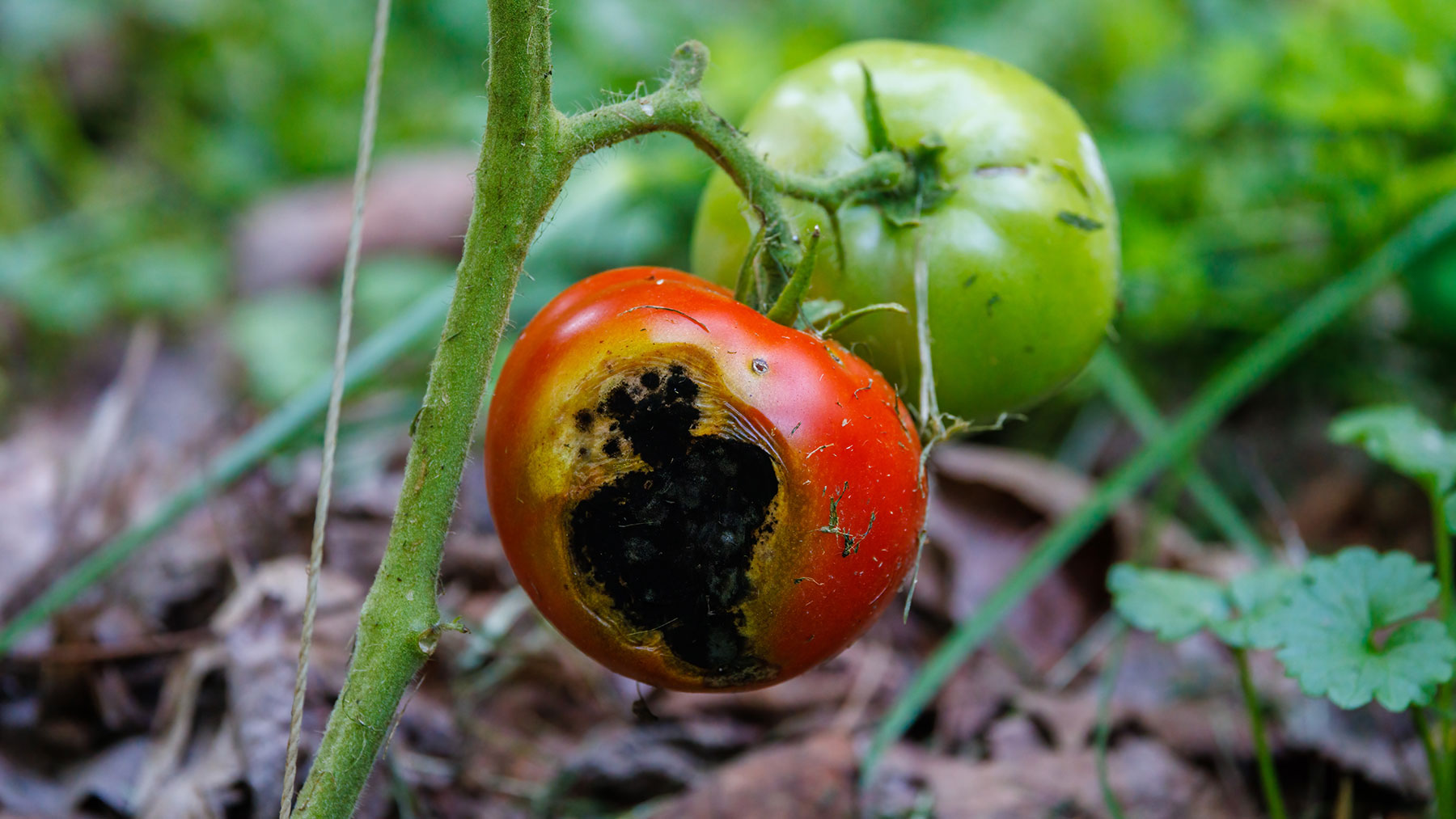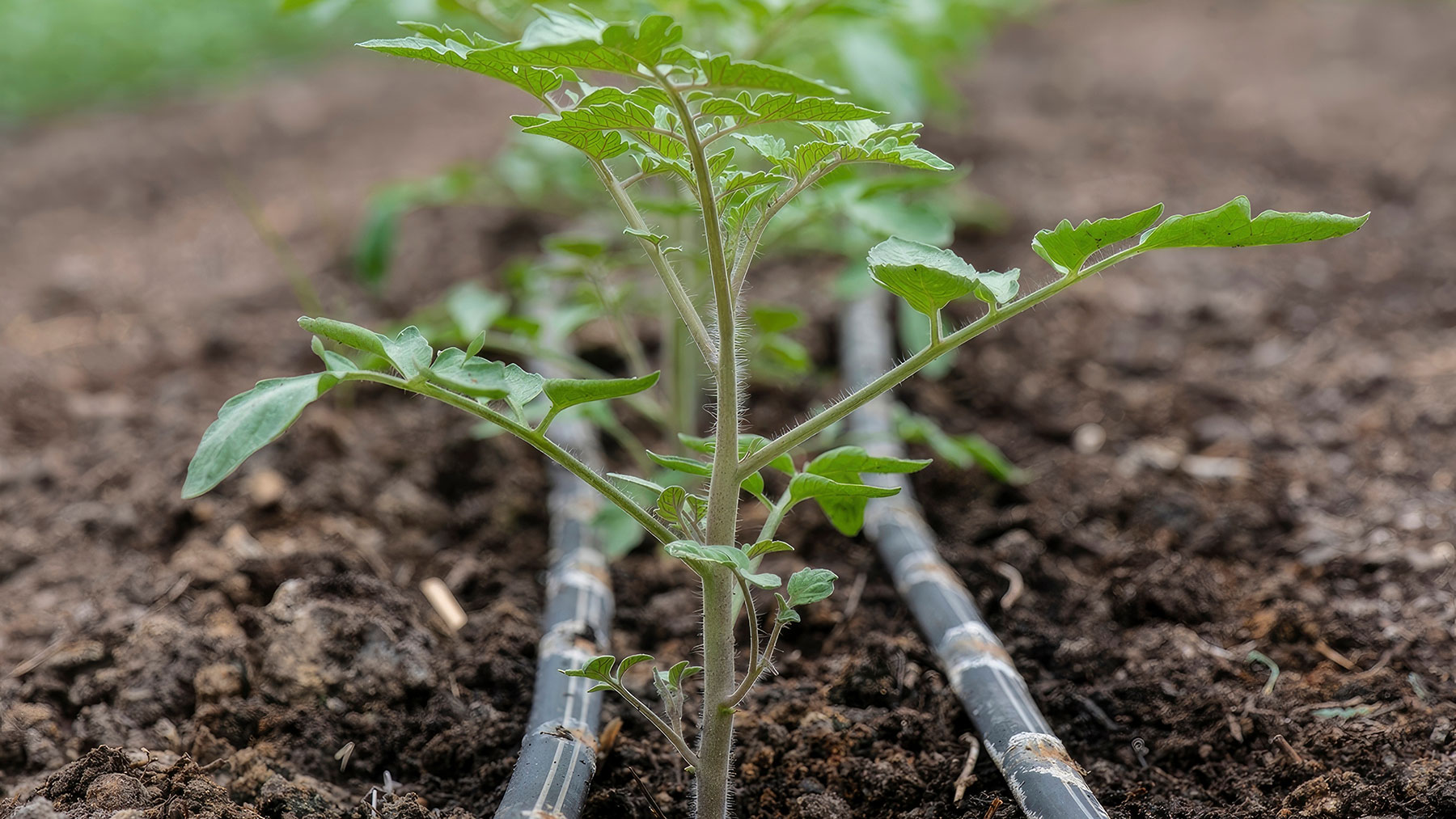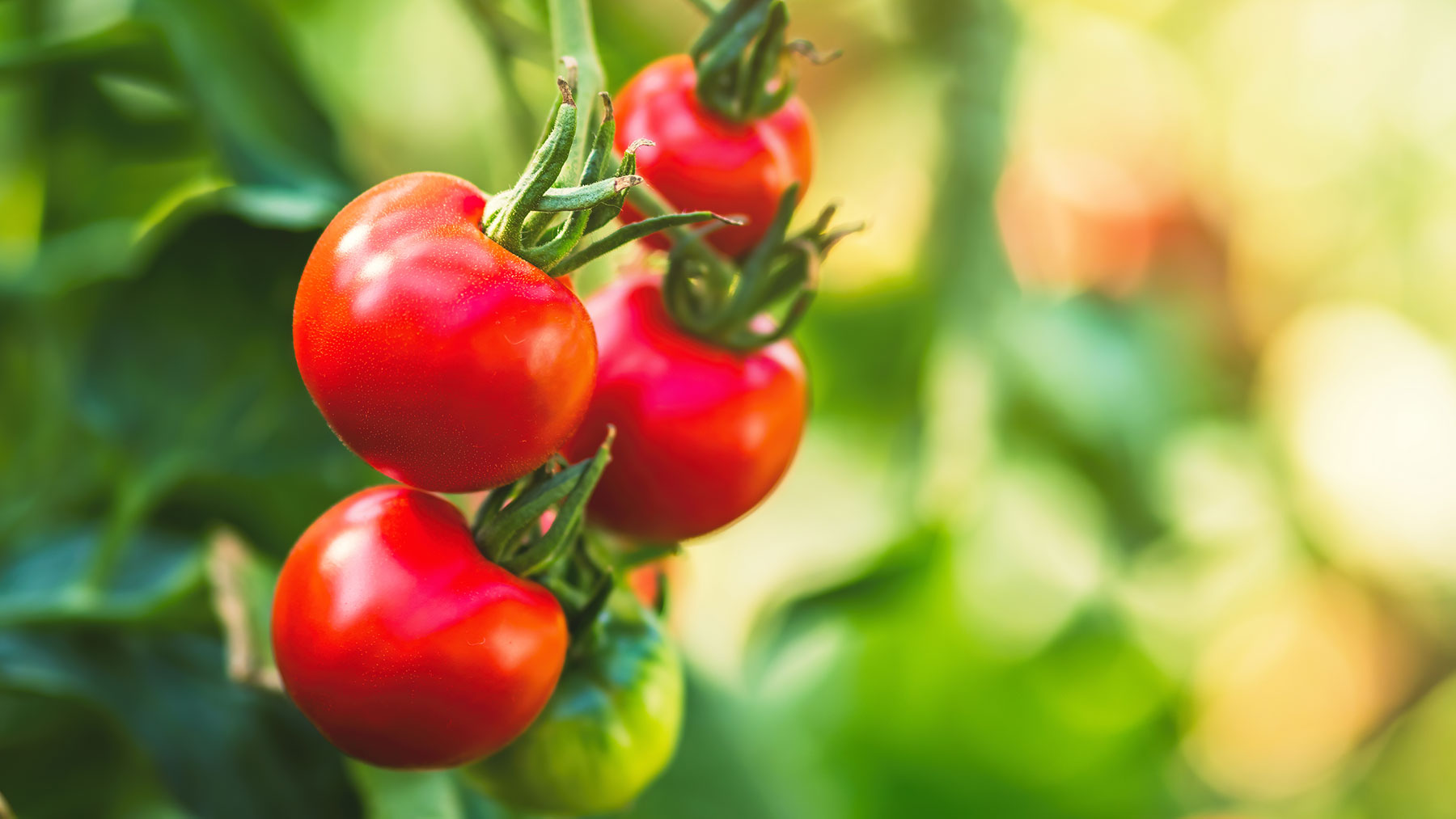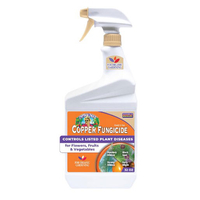How to spot and prevent tomato blight — expert gardeners explain how
Protect your tomato crop

Wouldn’t it be ideal that once you planted your tomatoes, you could leave them to grow with a good dash of sunshine, a regular feed, and water? However, growing vegetables isn’t quite as simple as that, and tomatoes can succumb to numerous diseases.
Whether you’re an experienced tomato grower or a first-timer, these juicy delicacies can perish when attacked by tomato blight. But what is tomato blight, how can you spot it, and can you take any measures to protect your crop from the disease?
Here, we share the advice of two expert gardeners who know how to identify, treat and prevent tomato blight.
What is tomato blight?
Tomato blight is a disease that attacks the fruits and foliage of tomato plants causing them to rot. However, to make matters a little more complicated there are two types of blight that can affect tomatoes.
Aileen Carroll, professional gardener and manager at Van Windens garden center in California, explains there is early blight, known as Alternaria solani and late blight, known as Phytophthora.
“They both unfortunately have no cure, so your goal should be to prevent blight altogether or manage blight, at best,” she adds.
Watch your potatoes too
Tomatoes aren’t the only vegetable that can be affected, as blight can also damage potatoes.
Sign up to get the BEST of Tom's Guide direct to your inbox.
Get instant access to breaking news, the hottest reviews, great deals and helpful tips.
How to identify early tomato blight

Symptoms of early blight include black or brown spots, about a third of an inch in diameter, appearing on the leaves, stem or fruit. “You usually see signs of early blight on the older leaves first, so keep an eye on the leaves at the bottom of your tomato plant,” advises Carroll.
Carrie Spoonemore, co-creator of Park Seed’s from Seed to Spoon app, says to also “look for wilting leaves and yellowing around the spots”.
How are tomatoes infected with early blight?
The spores causing early blight are airborne, but require moisture for germination and infections. “If conditions remain cool and humid for several days — like after rain — then conditions are prime for early blight spores to take hold,” Carroll explains.
How to identify late tomato blight

You can usually tell if your tomato plants have been affected by late tomato blight by checking the leaves. “Look for small green irregularly-shaped spots surrounded by yellow rings,” says Carroll. “These spots may rapidly grow in size and turn brown or even purplish.”
Spoonemore describes them as “water-soaked spots” which can “quickly enlarge and kill entire leaves.”
Another pointer is to look for stem lesions, “Stems and petioles can develop dark brown to black, greasy-looking lesions,” says Spoonemore. “Late blight can also have brown, firm spots on green or ripe fruit. These spots often have a leathery texture.”
How are tomatoes infected with late blight?
Unlike early blight, where the conditions are cool, late blight favors a warmer climate. “Late blight is common in damp coastal environments, “ explains Carroll, “but less common elsewhere. This fungus loves high humidity and temperatures between 50-78°F.
How to treat tomato blight

Taking the following steps can help treat the blight and prevent it from spreading to healthy plants.
1. Remove affected parts
Spoonemore recommends trimming off infected leaves and stems to reduce the spread of blight. However, to prevent spreading disease, ensure you clean your pruning shears after use.
2. Proper disposal
“Do not compost infested material,” says Spoonemore, “dispose of it in the trash.” This will avoid spreading the disease when applying compost to your garden.
3. Fungicide treatment
Apply a fungicide treatment designed to treat blight, remembering to follow the label instructions. Carroll says, “It’s possible to get control of the fungus by using a copper fungicide at the very first sign of an infestation,” although it won’t cure the problem.
4. Improve air circulation
According to Carroll, ensuring plenty of air circulation around your tomato plants is key to blight while allowing the leaves to dry off each day.
5. Mulching
Applying a mulch will also help. “Use a mulch to prevent soil from splashing on leaves, reducing spores transfer,” advises Spoonemore.
6. Watering
It’s best to avoid getting too much moisture on the leaves, keeping the foliage dry. Carroll suggests sticking to drip irrigation or careful hand watering rather than overhead irrigation.
Bonide Captain Jack’s Copper Fungicide: $10 @ Amazon
This ready-to-use copper fungicide comes in a handy spray bottle. It can be directly used on plants to protect them from blight, black spot, powdery mildew, and other diseases.
What are the best ways to prevent tomato blight?

There are several ways to avoid tomato blight to give your tomato plants the best chance to produce a healthy harvest.
1. Crop rotation
“Rotate your crops and do not plant tomatoes in the same location for at least 2-3 years,“ advises Spoonemore. The same applies for related crops, such as potatoes and eggplants, which she warns against planting consecutively in the same soil.
2. Watering methods
As mentioned above, under 'How to treat tomato blight', Spoonemore advises watering the base of the plant using drip irrigation or soaker hoses to keep the foliage dry. If the leaves become wet, they are more likely to succumb to fungal disease.
3. Correctly space and prune your plants
“Space plants adequately to ensure good air circulation and prune lower leaves to improve airflow, “ says Spoonemore. She advises against planting too closely, which can create a humid environment favorable for blight.
4. Promote good hygiene
Keeping the garden clean and hygienic will reduce the risk of blight being transferred. Spoonemore suggests, “Remove and dispose of plant debris, and disinfect gardening tools regularly. Be sure not to leave infected plant material in the garden or compost diseased plants.
5. Trying growing your tomatoes indoors
It’s harder to control the outside environment than the inside, so one way to reduce exposure to blight is to grow tomatoes indoors or in a greenhouse. Spoonemore also recommends being aware of other diseases that can be avoided by “ensuring there is adequate light, proper ventilation and maintaining appropriate humidity levels.”
6. Grow blight resistant tomatoes
One way to avoid tomato blight is to grow varieties that are resistant to the disease. Spoonemore recommends Fantastico Hybrid grape tomato and Nectar Hybrid cherry tomato.
More from Tom's Guide

Camilla Sharman has worked in publishing and marketing for over 30 years and has covered a wide range of sectors within the business and consumer industries both as a feature, content, and freelance writer.
As a business journalist, Camilla has researched articles for many different sectors from the jewellery industry to finance and tech, charities, and the arts. Whatever she’s covered, she enjoys delving deep and learning the ins and out of different topics, then conveying her research within engaging content that informs the reader. In her spare time, when she’s not in her kitchen experimenting with a new recipe, you’ll find her keeping fit at the gym. In the pool, stretching at a yoga class, or on a spin bike, exercise is her escape time. She also loves the great outdoors and if she’s not pottering about in her garden, she’ll be jumping on her bike for a gentle cycle ride.

